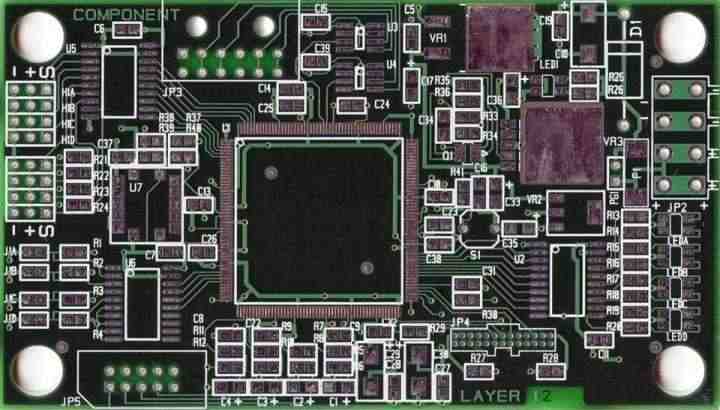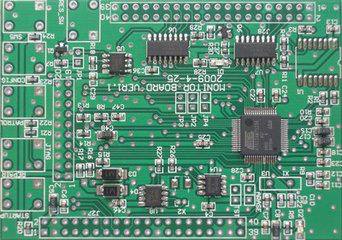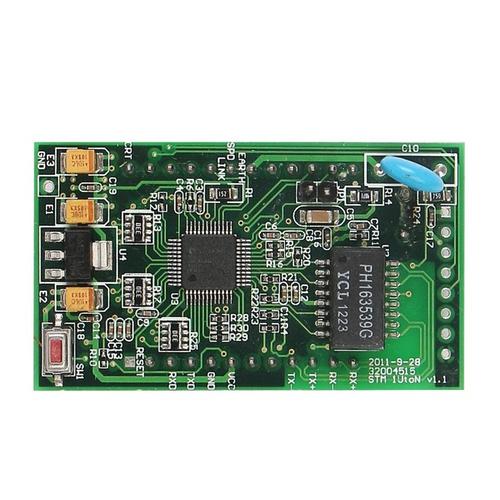
Defect 1: "stele" phenomenon, that is, tablet components "erection".
The main reason for the phenomenon of stele is that the moisture force at both ends of the component is unbalanced, and the torque at both ends of the component is unbalanced, resulting in "stele".
What conditions will lead to the uneven wetting force at both ends of the component during reflow welding, resulting in "stele"?
Factor A: Unreasonable design and layout of pad
(1) One of the two sides of the component is connected with the ground wire or there is a side of the pad area is too large, the heat capacity of the two ends of the pad is not uniform;
(2) The temperature difference on the PCB board surface is too large to cause uneven heat absorption on both sides of the component pad;
③ Large devices QFP, BGA, radiator around the small chip components at both ends of the solder pad will appear uneven temperature.
Solution: Engineers adjust the design and layout of the pad
Factor B: Solder paste and solder paste printing problems
① The activity of the solder paste is not high or the weldability of the components is poor. After the solder paste is melted, the surface tension is not the same, which will cause the imbalance of the wetting force of the solder pad.

The solder paste printing amount of two pads is not uniform, one side of the tin thick, tension is large, the other side of the tin thin tension is small, resulting in one end of the element is pulled to one side to form air welding, one end is pulled up to form a monument.
Solution: The factory needs to choose the solder paste with higher activity, improve the solder paste printing parameters, especially the window size of the steel mesh.
Factor C: Uneven force in the Z-axis direction of patch displacement
Will lead to the component immersed in the solder paste depth is not uniform, melting due to the time difference will lead to the wetting force on both sides of the imbalance, if the component patch shift will directly lead to the monument.
Solution: The factory needs to adjust the process parameters of the patch machine.
Factor D: Incorrect furnace temperature curve
If the reflow welding furnace body is too short and the temperature zone is too small, it will cause the working curve of PCB heating is not correct, so that the humidity difference on the board is too large, resulting in the imbalance of wetting force.
Solution: The factory needs to adjust the appropriate temperature curve according to each different product.
Defect 2: tin beads
Tin bead is one of the common defects in reflow welding, it not only affects the appearance but also causes bridging.
Tin beads can be divided into two categories: one appears on the side of chip components, usually as an independent ball; The other type appears around the IC pin, in the shape of scattered beads.
The main reasons for the production of tin beads are as follows:
Factor A: The temperature curve is incorrect
The reflow curve can be divided into four sections: preheating, holding, reflow and cooling. The purpose of preheating and insulation is to make the PCB circuit board surface temperature rise to 150℃ within 60 ~ 90s, and hold the PCB for about 90s, which can not only reduce the thermal shock of PCB and components, but also partly volatilized solvent energy of solder paste, so as to avoid spatter caused by too much solvent in reflow welding, resulting in solder paste rushing out of the pad and forming tin beads.
Solution: The factory should pay attention to the heating rate, and take moderate preheating, so that the solvent fully volatilized.
Factor B: Quality of solder paste
① The metal content of the solder paste is usually at (90±0.5)℅, low metal content will lead to too much flux composition, so too much flux due to preheating stage is not easy to volatile and cause flying beads;
② The increase of water vapor and oxygen content in solder paste will also cause flying beads. Because solder paste is usually refrigerated, when removed from the refrigerator, if not fully thawed and stirred, will cause water vapor to enter; In addition, the lid of the solder paste bottle should be closed each time after use. If it is not covered strictly in time, it will also lead to the entry of water vapor;
The solder paste printed on the steel net after completion, the remaining part should be dealt with separately, if put back in the original bottle, will cause the solder paste deterioration in the bottle, will also produce tin beads.

Solution: Ask the factory to choose a good solder paste, pay attention to the storage and use of solder paste requirements.
Other factors include:
① The printing is too thick, the excess tin paste overflow after the component is pressed down;
(2) The pressure of the patch is too large, the pressure makes the solder paste collapse to the ink;
③ The opening shape of the welding disc is not good, and the anti-tin beads are not processed;
④ the activity of tin paste is not good, dry too fast, or there are too many small particles of tin powder;
⑤ printing offset, so that part of the solder paste on the printed circuit board;
⑥ The scraper speed is too fast, resulting in poor edge collapse, resulting in the production of tin ball after reflux






